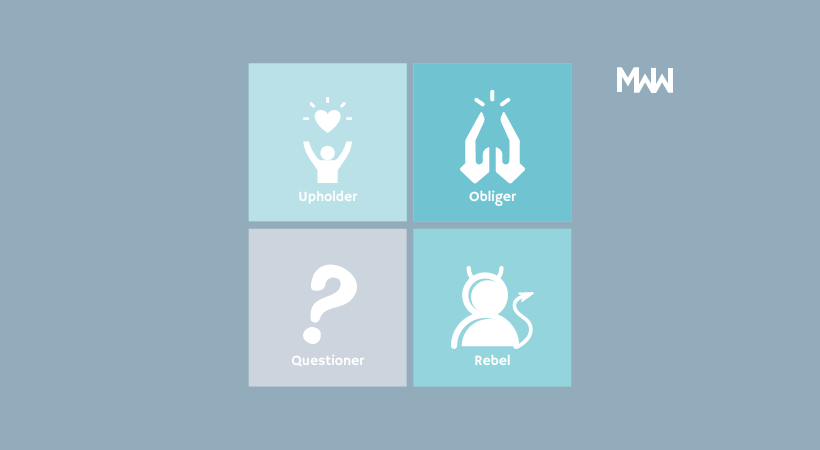How The Four Tendencies Helps Us Achieve Our Aims

Sometimes you come across an author who is writing about topics that just really resonate with you. That’s exactly what happened when I came across Gretchen Rubin, who has written 10 books. One of them, The Happiness Project, came into my life at exactly the right moment. Keen to explore more about this author who wrote about happiness in such a practical way, I spotted another book and framework by her — The Four Tendencies.
The Four Tendencies is simple and brilliant. The idea is that we all have ways we react to outer and inner expectations, and figuring that out can help us understand ourselves better and achieve what we’re working towards.
Here’s a little more about The Four Tendencies and why we love them.

About the Four Tendencies
The Four Tendencies is a framework created by author Gretchen Rubin. She describes it as a tool to, “help you set up situations in ways that make it more likely that you’ll achieve your aims.” (It’s no wonder this resonated with us!)
The idea is that there are outer and inner expectations, and how we react to each determines our “tendency.” The Four Tendencies are: Upholder, Questioner, Obliger, or Rebel.
- Upholders react well to either outer or inner expectations.
- Questioners question all expectations; they’ll meet an expectation if they think it makes sense.
- Obligers meet outer expectations but struggle to meet inner expectations.
- Rebels resist all expectations, outer and inner alike.
Ultimately it’s a really simple way to see how you react to outer and inner expectations. It gives you a language shortcut and helps you understand yourself better so you can better work with your own preferences and style.
You can take a quiz to learn which of the four tendencies you are.
How we’ve used the Four Tendencies
As with other personality frameworks, there is so much clear language and clarity that comes from understanding ourselves and our expectations.
Knowing these two kinds of expectations — outer expectations that might come from our friends and family, or from our workplaces, as well as inner expectations, like working towards goals that we set, or starting a new habit — can help us approach our collaboration together with a better understanding of where the other person is coming from.
For each of us, knowing our tendency has helped us tackle new projects and goals better knowing how we’ll react to expectations and what we might need to change to achieve our aims.
Through the quiz, we learned that Habbi is a Rebel (she resists expectations), and Hailley is an Upholder (she reacts well to expectations). This dynamic creates tensions at times, but having that language shortcut saves us loads of time. Habbi will sometimes say, “this is my rebel side coming out,” and it helps us both align and move forward.
Using this framework, we learned Hailley is an Upholder who reacts well to both inner and outer expectations and Habbi is a Rebel who resists expectations. Hailley is someone who thrives in a disciplined environment, whereas Habbi feels restricted by artificial structures.
This can create a tension as these are opposing qualities. What we find is often that tension can be dismantled by the language from the Four Tendencies, as we can both reach for phrases articulating our values and approach to structure.
The Four Tendencies is one of the more simple personality frameworks — there are just four options — but that doesn’t make it any less impactful. We’ll regularly refer to our tendency when we’re learning about ourselves or working together.
We talk more about The Four Tendencies and our own tendenies on MWW16.






Member discussion